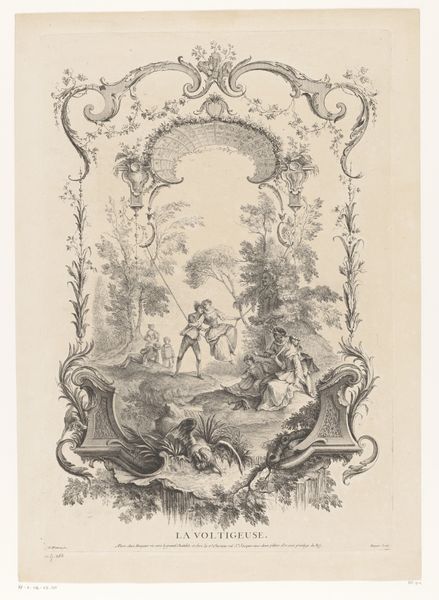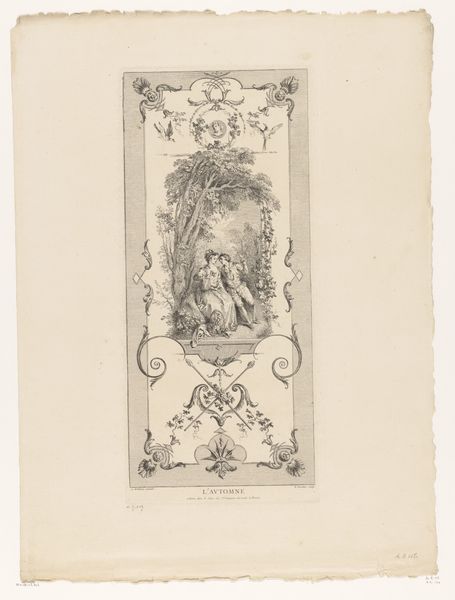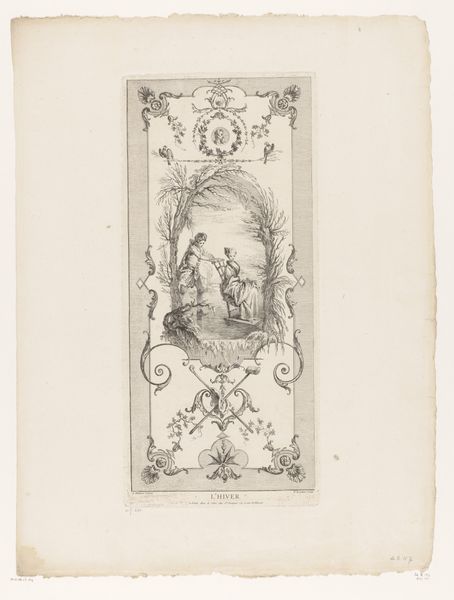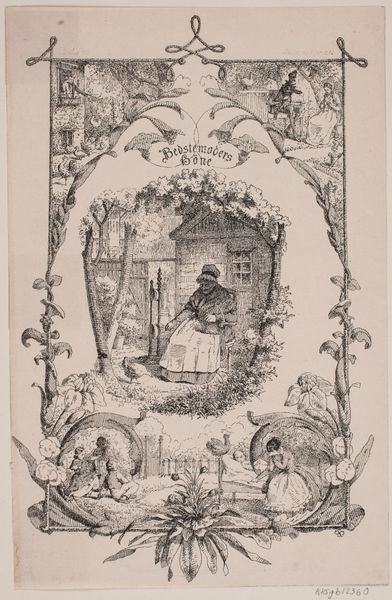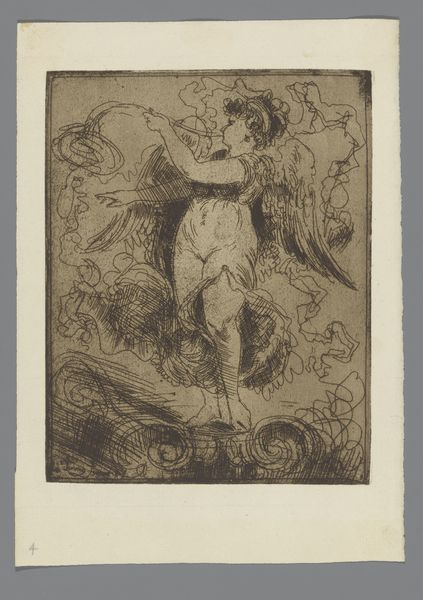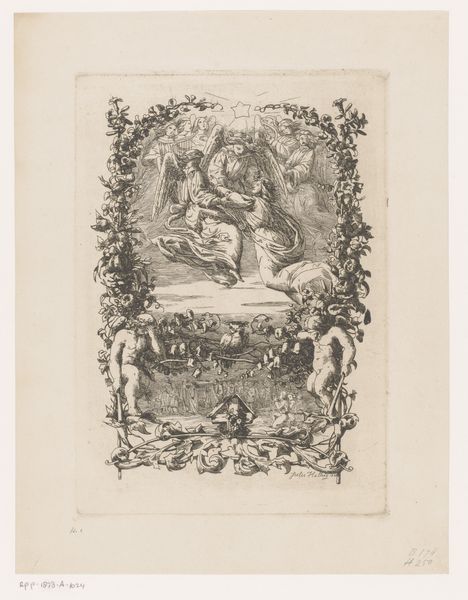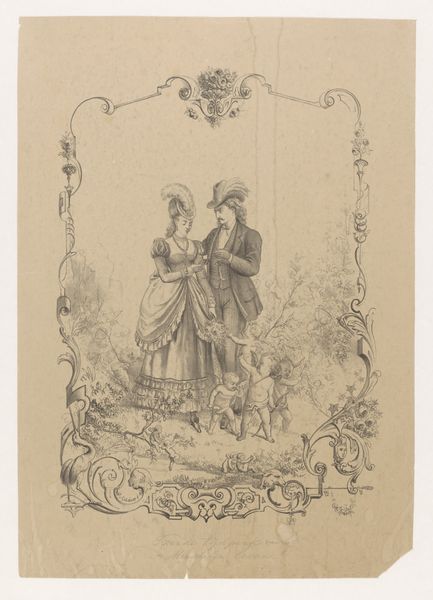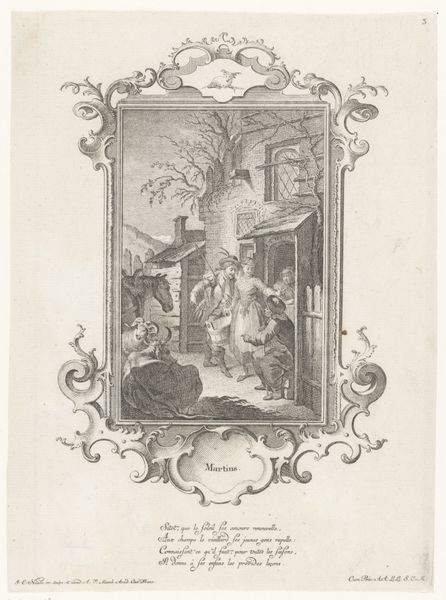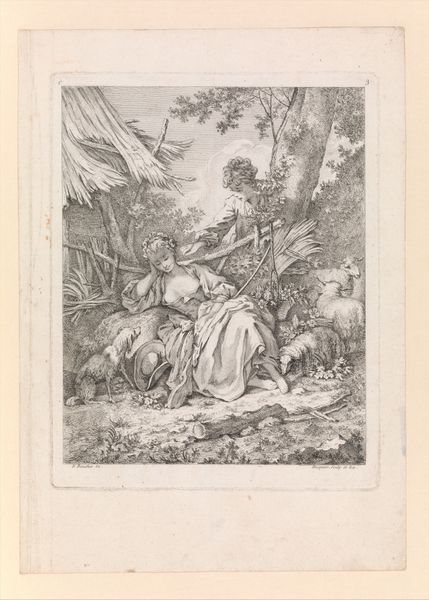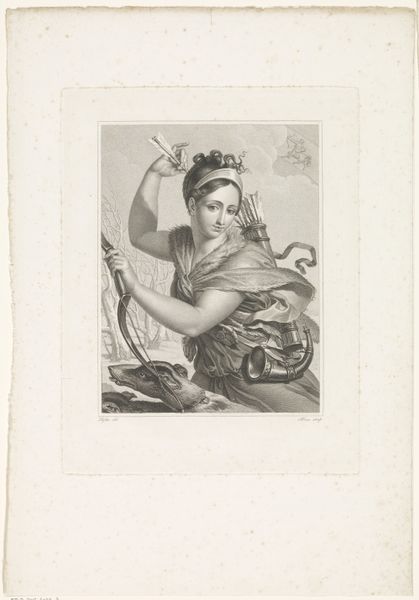
drawing, pencil
#
drawing
#
ink drawing
#
figuration
#
pencil
#
genre-painting
#
academic-art
Dimensions: height 470 mm, width 336 mm
Copyright: Rijks Museum: Open Domain
Curator: The sketch, titled "Kinderen en putti", which roughly translates to Children and Putti, completed around 1870 by Wilhelmus Petrus van Geldorp, showcases the artist's mastery with pencil and ink. What's your initial read on this genre scene? Editor: Immediately, the allegorical framework strikes me. The children are innocent and represent youthful joy. There are layers here beyond simple genre painting, with symbolic associations with purity, abundance, maybe even notions of idealized pastoral life that permeated that era. Curator: I’m most fascinated by the layering of marks, which speaks to the processes involved in the materiality of 19th century academic art and drawing. Look at the careful application of cross-hatching to model forms versus the loose gestural work used in creating the landscape behind the allegorical scene. It also invites me to ask how preparatory drawings such as this were important precursors to finished canvases and printed images for the popular art market. Editor: You know, it does highlight artistic production, I see your point, especially concerning the interplay between idealized form and raw representation. Beyond technique though, let’s consider the putti, those cherubic figures so popular in art history. They suggest divine love and serve as cultural touchstones linking to Renaissance artistic themes as well as older Greco-Roman antecedents. The historical echo reverberates here in an art object. Curator: Precisely, it serves to highlight the artist's historical and material working process in relation to workshop or academic practices; in the end it serves to reveal its social role beyond mere sentimentality. To understand its function in its moment and later eras one would really want to better contextualize workshop and distribution methods in place. Editor: A social context is important, though! Symbols have resonance beyond immediate economic consumption: the persistence of the cherubic putti and childlike figures themselves taps into universal themes about life and innocence, their continuous deployment through changing artistic and social structures is part of what makes them relevant still. Curator: Perhaps the work embodies both dimensions, serving artistic aims through a combination of learned imagery and commercial avenues that helped to secure Geldorp’s practice. Editor: Exactly; looking closely can only enhance one’s knowledge and appreciation of a seemingly small image. Curator: Absolutely! Examining the art object from multiple angles, we discover rich networks of connection to the past, to studio practices and beyond.
Comments
No comments
Be the first to comment and join the conversation on the ultimate creative platform.
